bentax1978
4 of a Kind
That post is worthless without pics.
Fine, if you insist. Hope this is what you had in mind.

That post is worthless without pics.

^^ worthless even with picFine, if you insist. Hope this is what you had in mind.

sigh, here's how you do it:
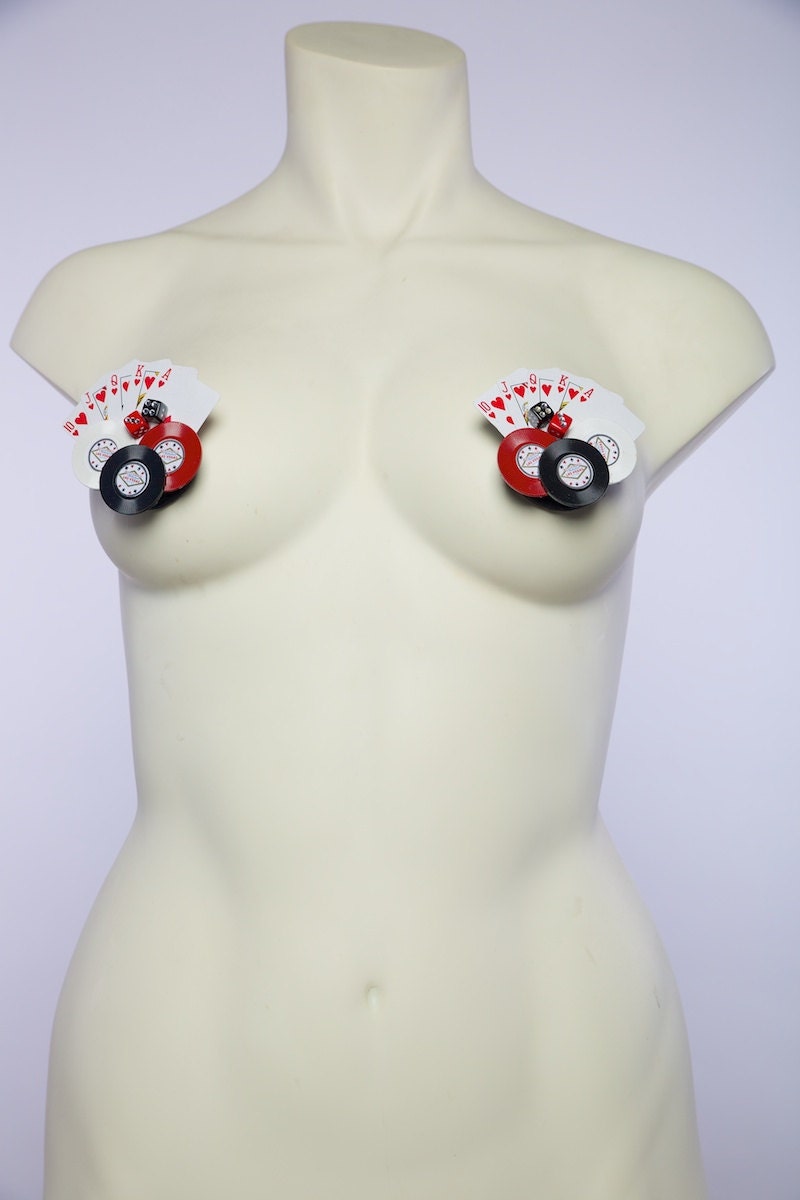



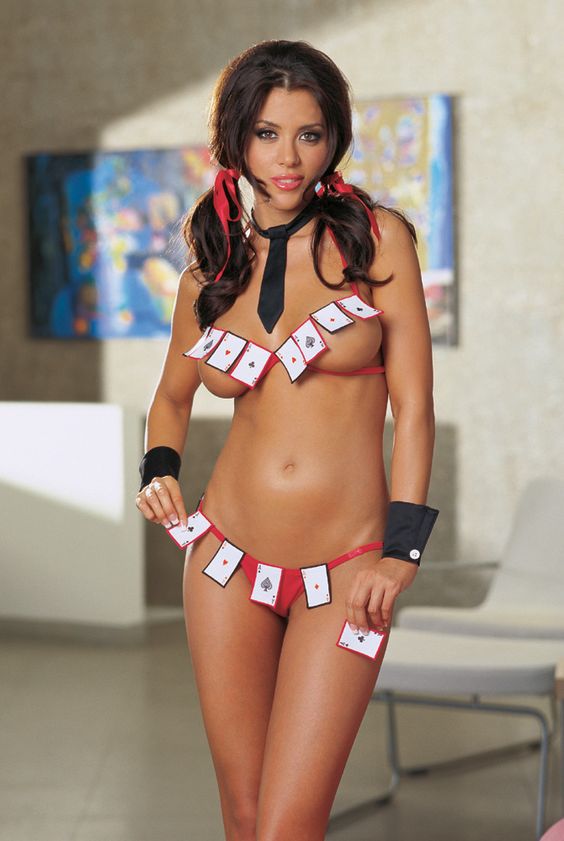
@Tracy - you can buy them here:
http://www.ebay.com/itm/Reusable-Se...ody-Nipple-Costume-Body-Stickers/171289803238
@MD Mike - you can thank me later.
Do you still have the GPI proofs for the Horseshoes? That spec was listed for the orange chip. I asked one of my gaming contacts about it and he said it's for security and actually required on every chip above $5. The OAC rules don't specifically address this but I guess it's one of those things where the executive director won't approve chips that don't comply. As I stated the first time I mention it, it's for security reasons I don't completely understand because really, I don't. I fail to see how a slightly different inlay color is adds to the security one gains with things like UV marking and LaserTrak. Unlike those features the colors are trivial to duplicate. And yet all the Ohio casinos I'm aware of follow this and I've seen it in plenty of other states too.
By the same token, strictly reading the rules there is no automatic authorization or approved color scheme for $2 value chips in Ohio. And yet, the Cincinnati casino had them as Horseshoe and has them again as JACK because the director has presumably so approved.
^^ I like that - it definitely makes a lot more sense and that's why I've been struggling to see the value in specifying such an easy to defeat control. Do they really think that if someone is going to counterfeit a chip they don't have the time to do a color match on a sticker? To your point, GPI doesn't have time during production but a hobbyist, professional label maker, or studious criminal certainly has time to get those details right.
Now if we could just figure out why every casino in Ohio had the same small shapes on each inlay - triangle for the $25, snowflake star for the $100, etc - that would clear up all the mysteries. That, too, makes little sense as a security feature. It's not codified in regulations but it's more than coincidence that all four casinos (owned by two different companies) used the same marks. Clearly someone told them they had to have them. Yet when the Horseshoes rebranded to JACK they didn't include the marks on the new chips.
These are not the microdots. Those are contained in a white circle. Lower edge on the Hollywood chip and left on the Horseshoe. What's the triangle for (Top for Hollywood and right edge for Horseshoe)?I haven't examined them closely enough but I was assuming that the little dots are micro-printing, the ones that say "PAULSON GPI" over and over, in microscopically small print. (Very hard to reproduce without professional equipment!)
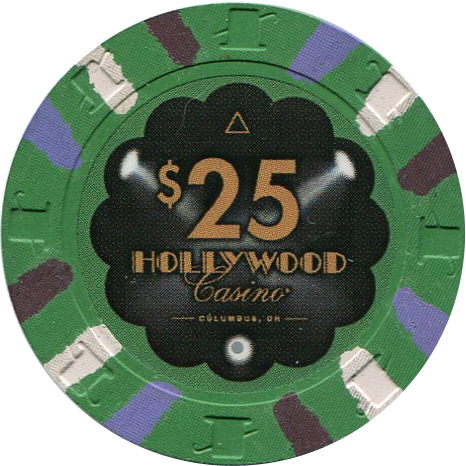
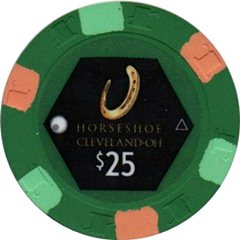
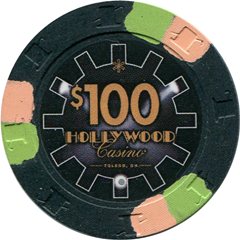
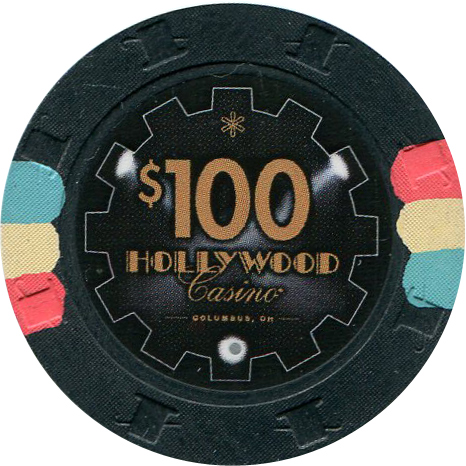
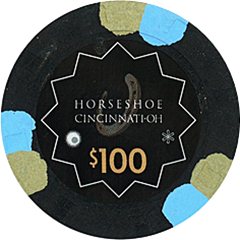
I forgot to respond to this specifically, but as a guy who has designed security controls for a living I did want to circle back. Your point is certainly true in a theoretical sense. However when the realities of business set in designing such perfect systems almost never happens because they are impracticable or cost way too much. The real calculus is to understand the value of the asset you are trying to protect and then design controls that will withstand attack up to at least that value. It's the old "why doesn't anybody counterfeit $1 bills? Answer: Because a good fake would cost more than a dollar to make" argument.One of the tenets of good security design, whether for web security, anti-counterfeiting, TV descrambling, etc. is to assume that your attacker has both infinite patience and infinite time. If this system can be defeated, it will be defeated, eventually.
Hey! That looks familiar!!!Horseshoe Quarters - A wonderful Sight!
Lucky Derby $1's with Gear Labels. Left five of the Lucky Derby chips without labels as a token...
Hey! That looks familiar!!!
